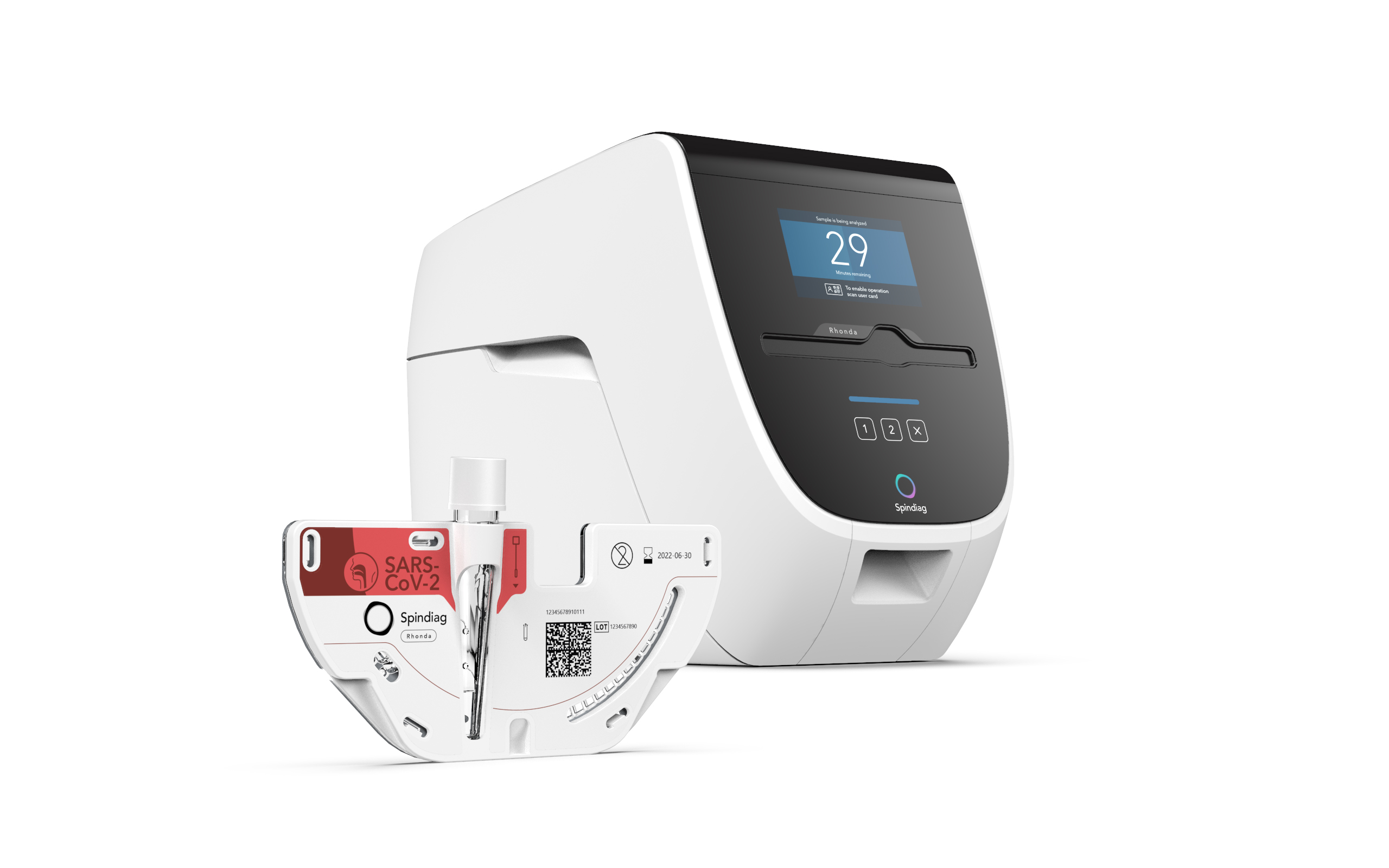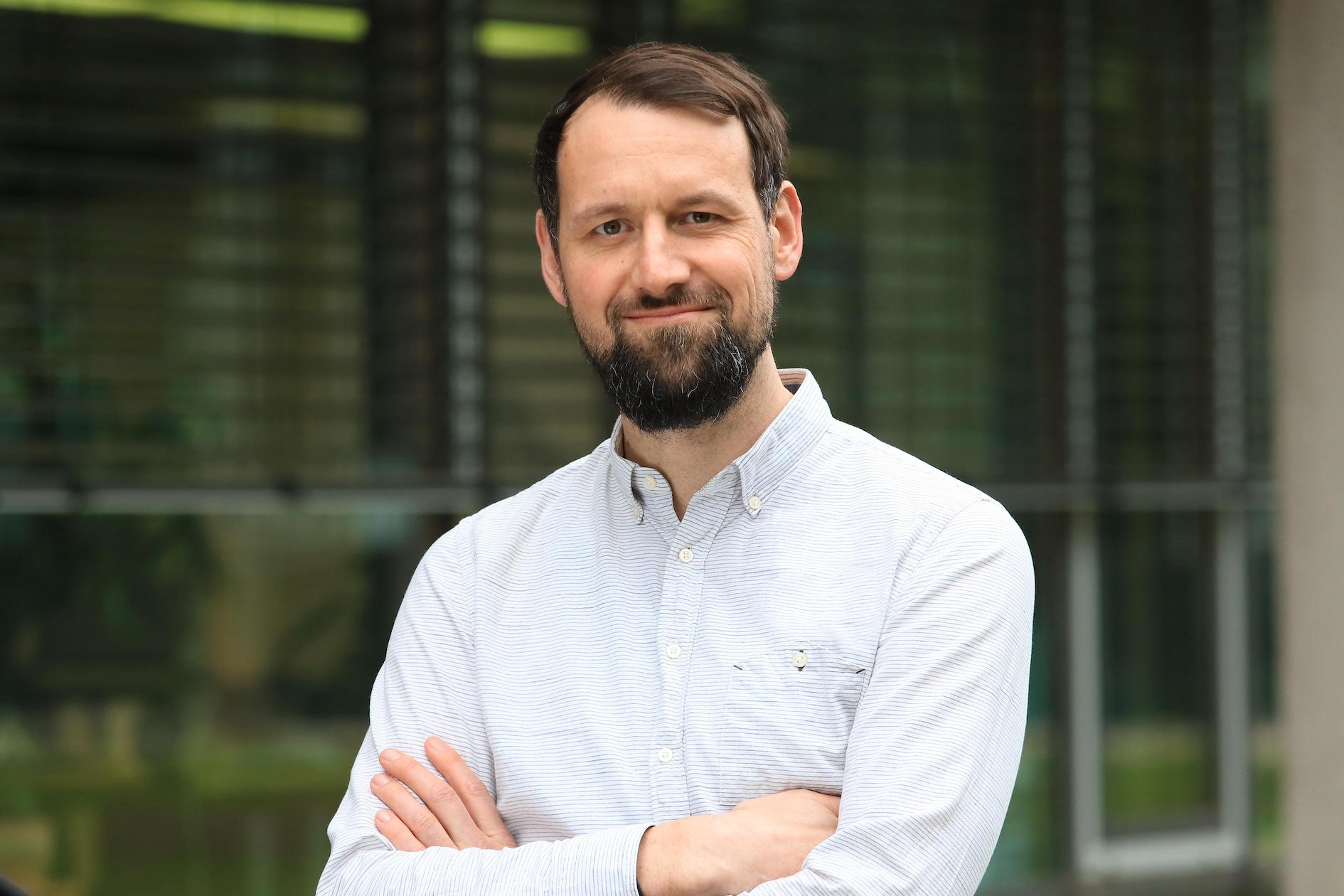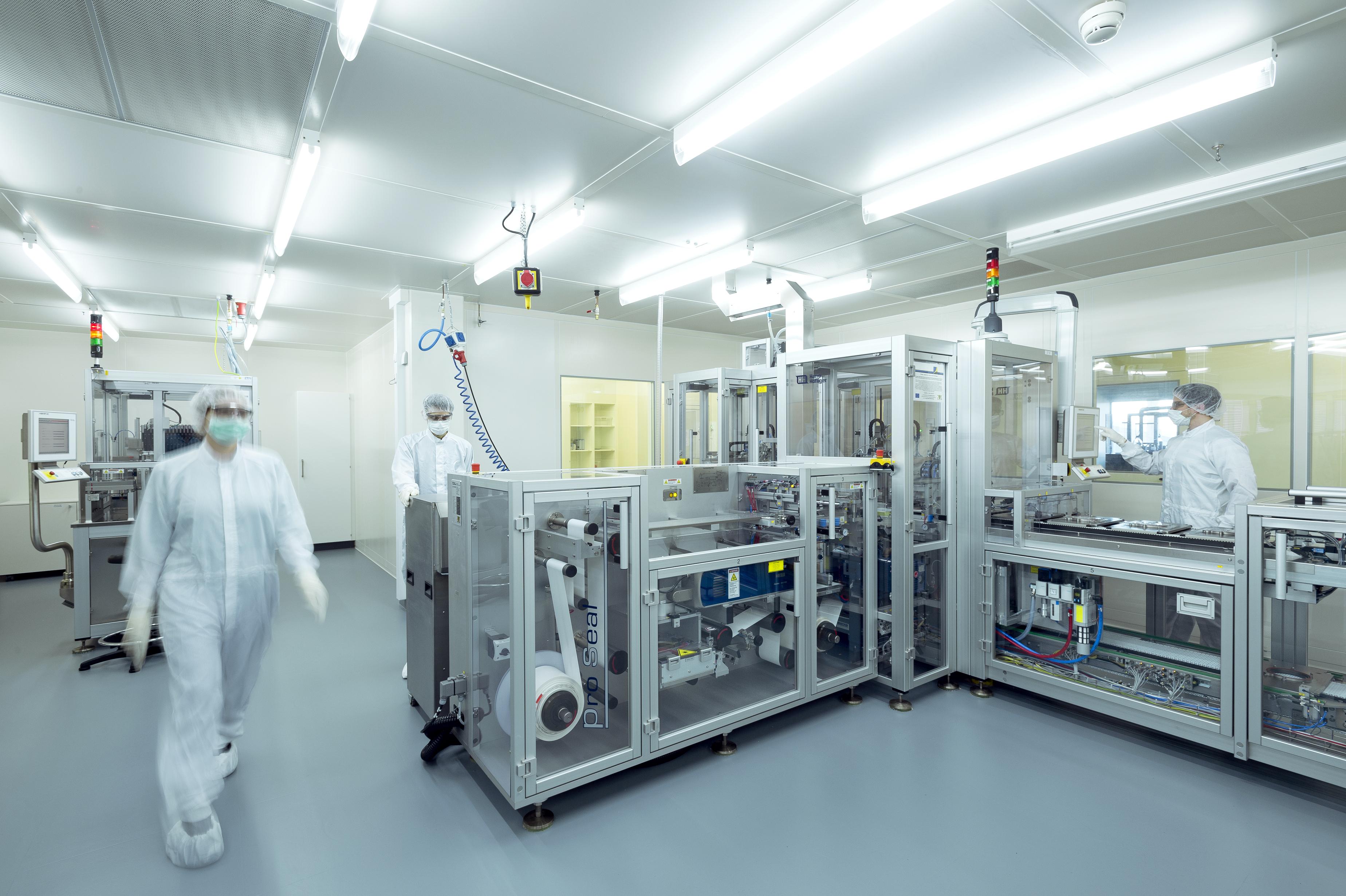Rapid coronavirus test delivers results in 43 minutes
The Hahn-Schickard Institute and Spindiag GmbH in Freiburg im Breisgau have joined forces to develop a rapid test used at the point of care. The test takes just 43 minutes to show whether a patient is infected with the coronavirus SARS-CoV-2. The rapid test is expected to be given market approval in Germany and the EU during the final quarter of 2020.
 Prof. Dr.-Ing. Roland Zengerle has headed the Hahn-Schickard Institutes in Freiburg and Villingen-Schwenningen since 2005 and has held the Chair of Application Development at the Department of Microsystems Engineering (IMTEK) at the University of Freiburg since 1999. © Wolfgang Sperl
Prof. Dr.-Ing. Roland Zengerle has headed the Hahn-Schickard Institutes in Freiburg and Villingen-Schwenningen since 2005 and has held the Chair of Application Development at the Department of Microsystems Engineering (IMTEK) at the University of Freiburg since 1999. © Wolfgang SperlCurrently, in most cases it takes one to two days for the results of a coronavirus SARS-CoV-2 tests to be available from the laboratory. "I know many people who have waited a week for the results," says Prof. Dr.-Ing. Roland Zengerle, professor at the University of Freiburg and head of the university’s Hahn-Schickard Institute. That was at the beginning of the pandemic. The test itself can actually be done quickly. Most of the time is taken up with sending the sample to the laboratory, evaluating the test and transmitting the results to the test site and the patient. All this is no longer required with Spindiag’s rapid coronavirus test: the Spindiag test is performed directly at the place where the sample is taken, and the results can be read directly from the device after 43 minutes and - if necessary – transferred electronically.
Miniaturised laboratory process is controlled by rotation
The test system consists of an analyser and a cartridge containing all the reagents required for the test. Swab samples from the nose or throat are inserted directly into the test cartridge, thus reducing users’ risk of infection to a minimum. The device can process two cartridges simultaneously, so that two samples can be analysed at the same time. The miniaturised laboratory procedure consists of about 30 individual steps and commences with the push of a button:
 The test system consists of an analyser and a cartridge. Two cartridges can be analysed simultaneously. © Spindiag GmbH
The test system consists of an analyser and a cartridge. Two cartridges can be analysed simultaneously. © Spindiag GmbHThe liquids are transported, mixed, divided, heated and cooled inside narrow channels and small chambers. The process is controlled by centrifugal forces of varying strength, which are generated when the cartridge is rotated in the analyser at different speeds, up to a maximum of 50 revolutions per second. "The development of centrifugal microfluidics technology at the University of Freiburg began 20 years ago and continued over many generations of doctoral students," says Zengerle. Work was then taken over by the Hahn-Schickard Institute for Microanalytical Systems in Freiburg, a non-profit research institute in the field of microsystems technology, which brings basic research from the university into application. Spindiag was finally founded by six Hahn-Schickard Institute employees in 2016.
 Dr. Markus Rombach leads the project at Hahn-Schickard. © Wolfgang Sperl
Dr. Markus Rombach leads the project at Hahn-Schickard. © Wolfgang SperlThe coronavirus SARS-CoV-2 is usually detected using PCR (polymerase chain reaction), a technique used to amplify and detect small DNA segments of interest using primers. The Spindiag platform involves something known as nested PCR, which increases the specificity of DNA amplification and is performed in the cartridges of the test system. "By using two successive PCR reactions, very small amounts of DNA can thus be detected, so that even weakly positive patients can be identified," explains Markus Rombach, head of the project at the Hahn-Schickard Institute for Microanalytical Systems.
Testing for over 20 pathogens simultaneously
The method can be developed further for use in differential diagnostics, i.e. when a patient needs to be tested not only for the coronavirus SARS-CoV-2, but also for other viruses or bacteria at the same time. "We were able to analyse a sample in a cartridge for the presence of more than 20 different pathogens at the same time," says Rombach. Spindiag originally developed its rapid test for detecting bacteria that are resistant to several antibiotics.
 Pilot line at Hahn-Schickard: The test system will initially be produced at Hahn-Schickard and from autumn/winter 2020 onwards additionally mass produced at another company. © Hahn-Schickard
Pilot line at Hahn-Schickard: The test system will initially be produced at Hahn-Schickard and from autumn/winter 2020 onwards additionally mass produced at another company. © Hahn-Schickard"For example, the test system can be used to test patients at the point of care, i.e. on admission to hospital," reports Zengerle. "This enables rapid on-the-spot decisions to be made on whether the person tested is infected with multi-resistant pathogens and therefore needs to quarantine, rather than being put in a room with other patients, for example patients who have just undergone an operation." When the coronavirus pandemic hit the world, the company converted the test system into a rapid Sars-CoV-2 test within a very short time.
Large sums of money were quickly mobilized to advance the test system into a rapid Sars-CoV-2 test: at the end of May 2020, Spindiag announced the completion of a Series B financing round of 16.3 million euros as expected. In April 2020, the company, together with the Hahn-Schickard Institute, received a grant of six million euros from the Baden-Württemberg Ministry of Economics, Labour and Housing. The capital increase and the funding are earmarked for preparing the market launch of the test for detecting SARS-CoV-2.
Market approval expected in Q4 2020
The test can be used in many ways. Zengerle sees outpatient units and hospitals as the first priority: "If people with symptoms that might be caused by coronavirus infection are about to be admitted to hospital, the test can be used to quickly provide results at the point of care, thus preventing them from coming into contact with other people in the hospital." However, the test system could potentially also be used for SARS-CoV-2 testing outside hospital settings, for example in smear test centres, pharmacies, nursing homes, at border controls, airports or in companies where test results are needed quickly. According to Spindiag, the cost of a test will be well below 50 euros. As a comparison: since July 1, 2020, laboratories in Germany have been paid 39.40 euros for a coronavirus test. In addition, there is a flat-rate transport fee and a fee for medical services.
"The Spindiag test system is currently in the analytical and clinical performance evaluation phase," explains Zengerle. "This is two stages prior to market entry." A large number of tests are being performed to collect data, for example on the probability as to whether a negative sample will be recognised as negative and a positive sample as positive. "The data look very promising," Zengerle says. Market approval in Germany and the EU in the 4th quarter of 2020 is now imminent.